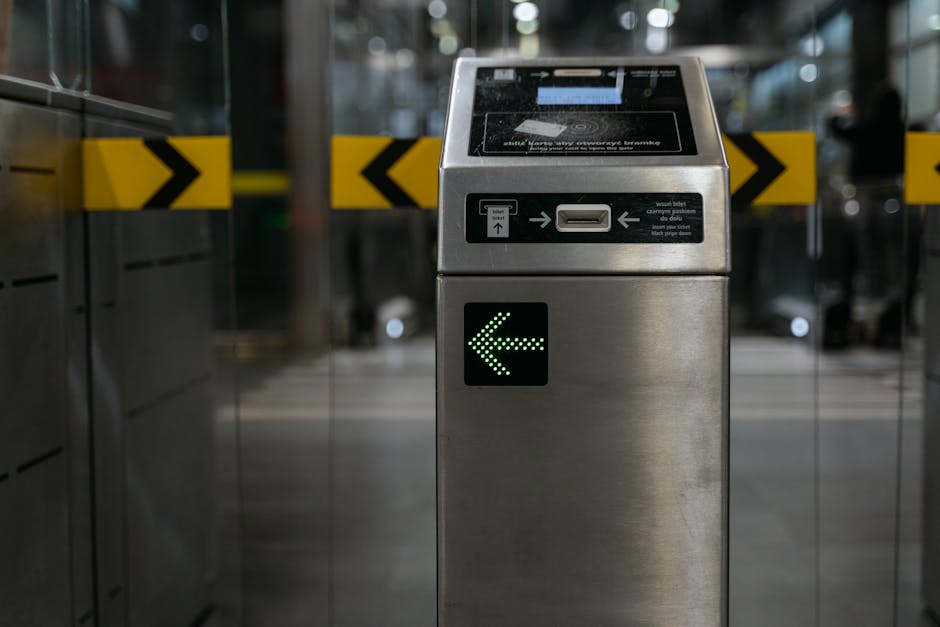How to Strengthen Your Access Control
Did you know that 81% of data breaches are caused by stolen or weak passwords? Strong access control is essential in protecting your sensitive information. It’s not just about locking doors; it’s about managing who gets in and who stays out. This article will guide you through the steps to strengthen your access control and keep your data safe.
What is Access Control?

Access control is like the security guard of your digital world. It determines who can enter your systems, access data, and perform actions. Think of it as a lock on your front door. The stronger the lock, the harder it is for unwanted visitors to get inside.
There are three main types of access control:
- Discretionary Access Control (DAC): Users have control over their own data. They can give others access.
- Mandatory Access Control (MAC): Access decisions are made based on regulations. Users have limited control.
- Role-Based Access Control (RBAC): Access is based on the user’s role within an organization. This limits access to what’s necessary.
Understanding these types helps you choose the right approach for your needs.
Why is Strong Access Control Important?

Imagine leaving your house unlocked. It invites trouble. The same goes for your digital space. Strong access control protects you from unauthorized access and data breaches.
Here are some reasons why it matters:
- Data Protection: It safeguards sensitive information from theft.
- Compliance: Many industries have regulations. Strong access control helps you meet these requirements.
- Trust: Customers trust businesses that take their security seriously.
When you strengthen your access control, you build a safer environment for everyone.
How Can You Strengthen Your Access Control?

Now that you know the basics, lets explore practical steps you can take to strengthen your access control.
Are Your Passwords Strong Enough?
Passwords are your first line of defense. A weak password is like a flimsy lock.
Here are some tips for creating strong passwords:
- Use at least 12 characters.
- Include a mix of letters, numbers, and symbols.
- Avoid common words or phrases.
- Change your passwords regularly.
Consider using a password manager. It generates and stores complex passwords for you, making it easier to keep your accounts secure.
Are You Using Two-Factor Authentication (2FA)?
Two-Factor Authentication adds an extra layer of security. It requires not just your password but also a second piece of information, like a code sent to your phone.
This makes it harder for hackers to access your accounts. Even if they steal your password, they still need that second verification step.
Most online services offer 2FA. Enable it wherever you can. it’s a simple way to boost your security.
Who Has Access to Your Data?
Reviewing who has access to your data is crucial. Not everyone needs access to everything. Adopt Role-Based Access Control (RBAC) to limit access based on job roles.
For example, an intern shouldn’t have access to financial records. Regularly audit access rights and adjust them when needed.
How Often Do You Update Software?
Software updates often include security patches. Failing to update software is like ignoring a broken lock.
Set automatic updates if possible. This ensures you have the latest security features. If you manage software manually, create a schedule for regular updates.
Are You Training Your Employees?
Your staff is your first line of defense. If they don’t know about security risks, they can unintentionally compromise your data.
Implement regular training sessions to educate employees about best practices, phishing scams, and safe browsing habits. A well-informed team is key to strong access control.
What About Physical Security?
Access control isn’t just about digital security. Physical security is equally important. Ensure that your office has secure entry points.
- Use key cards or biometric scans for entry.
- Lock servers and sensitive equipment in secure areas.
- Monitor entry points with cameras.
Physical access control helps protect against intrusions in the real world.
Common Misconceptions About Access Control

Many people have misconceptions about access control. Lets clear up a few:
Is Access Control Only for Large Businesses?
No, access control is essential for businesses of all sizes. Small businesses can be targets too. Implementing strong access control is vital regardless of your size.
can’t I Just Rely on Antivirus Software?
While antivirus software is important, it’s not enough on its own. Access control adds an extra layer of security. Think of it as a fence around your home.
What Are the Benefits of Strong Access Control?
Investing in strong access control brings several benefits:
- Reduced Risk: Lower chances of data breaches.
- Enhanced Reputation: A secure business gains customer trust.
- Regulatory Compliance: Meet industry standards and avoid fines.
- Increased Productivity: Employees work better when they feel safe.
The benefits far outweigh the costs of implementing these practices.
How to Monitor and Maintain Access Control
Strengthening access control is not a one-time effort. You need to monitor and maintain it regularly.
What Tools Can Help?
Various tools can help you manage access control:
- Identity and Access Management (IAM) Software: Helps manage user identities and access.
- Security Information and Event Management (SIEM): Monitors and analyzes security data for threats.
- Endpoint Security Solutions: Protects devices connected to your network.
Choose tools that fit your needs and budget. They can streamline your access control efforts.
How Often Should You Review Access Policies?
Regularly review your access policies. A good practice is to do this at least every six months. This ensures that access levels align with current roles and responsibilities.
Conclusion: Take Action Now
Strengthening your access control is essential in todays digital age. Start by assessing your current practices. Implement strong passwords, use 2FA, and educate your team. Monitor your systems regularly and adapt as needed.
Are you ready to take action? Begin today to protect your data and your business. Remember, a secure future starts with strong access control.
For more information on securing your business, check out the National Cyber Security Centres 5 Steps to Cyber Security.



